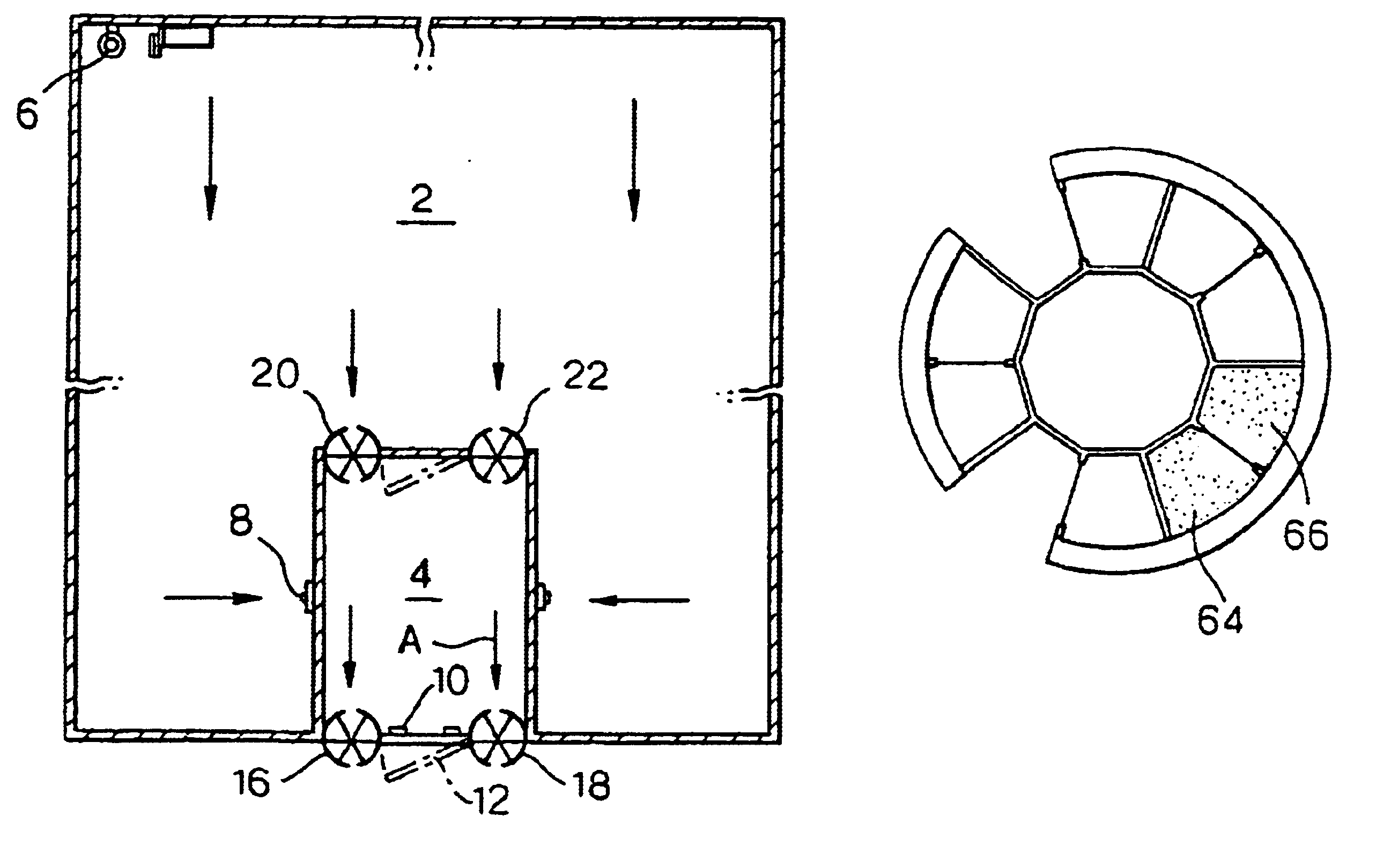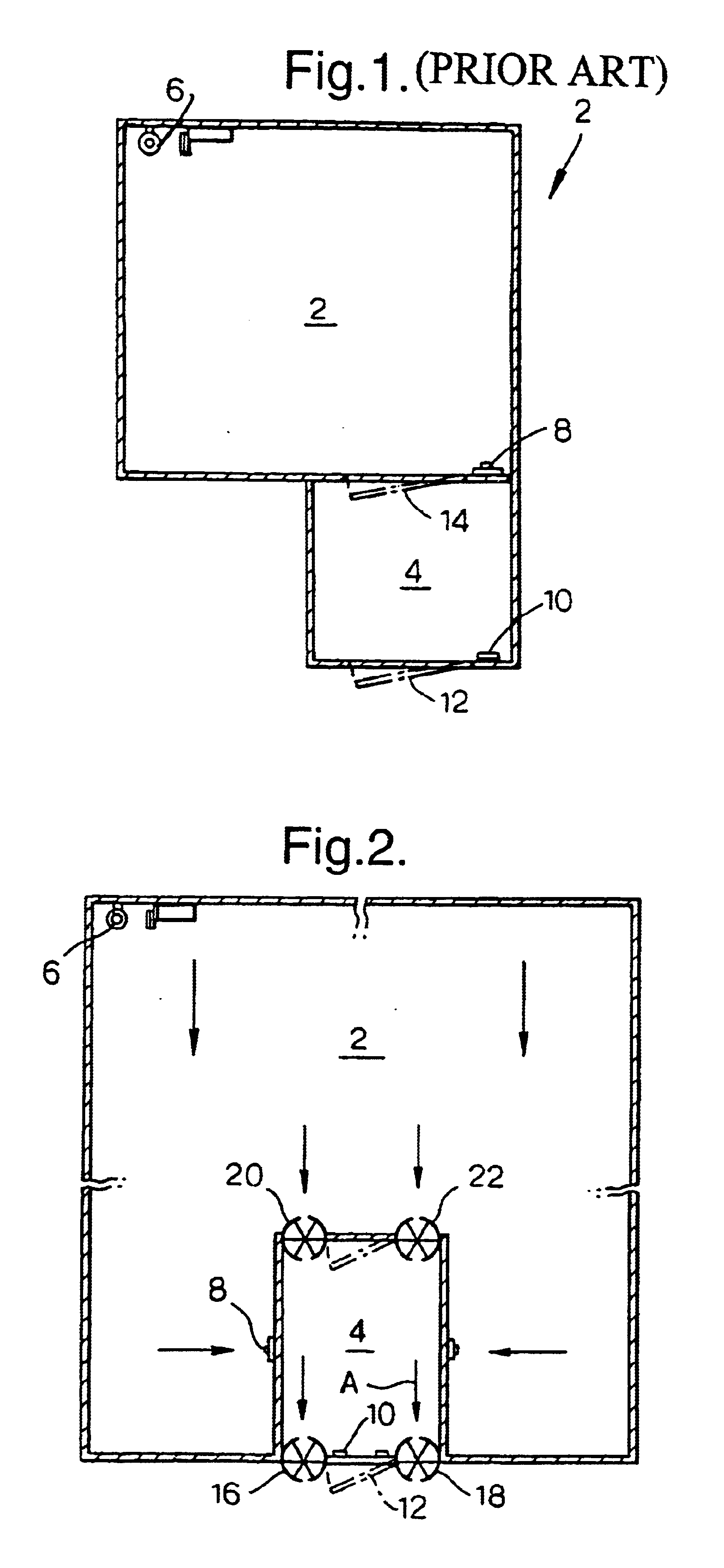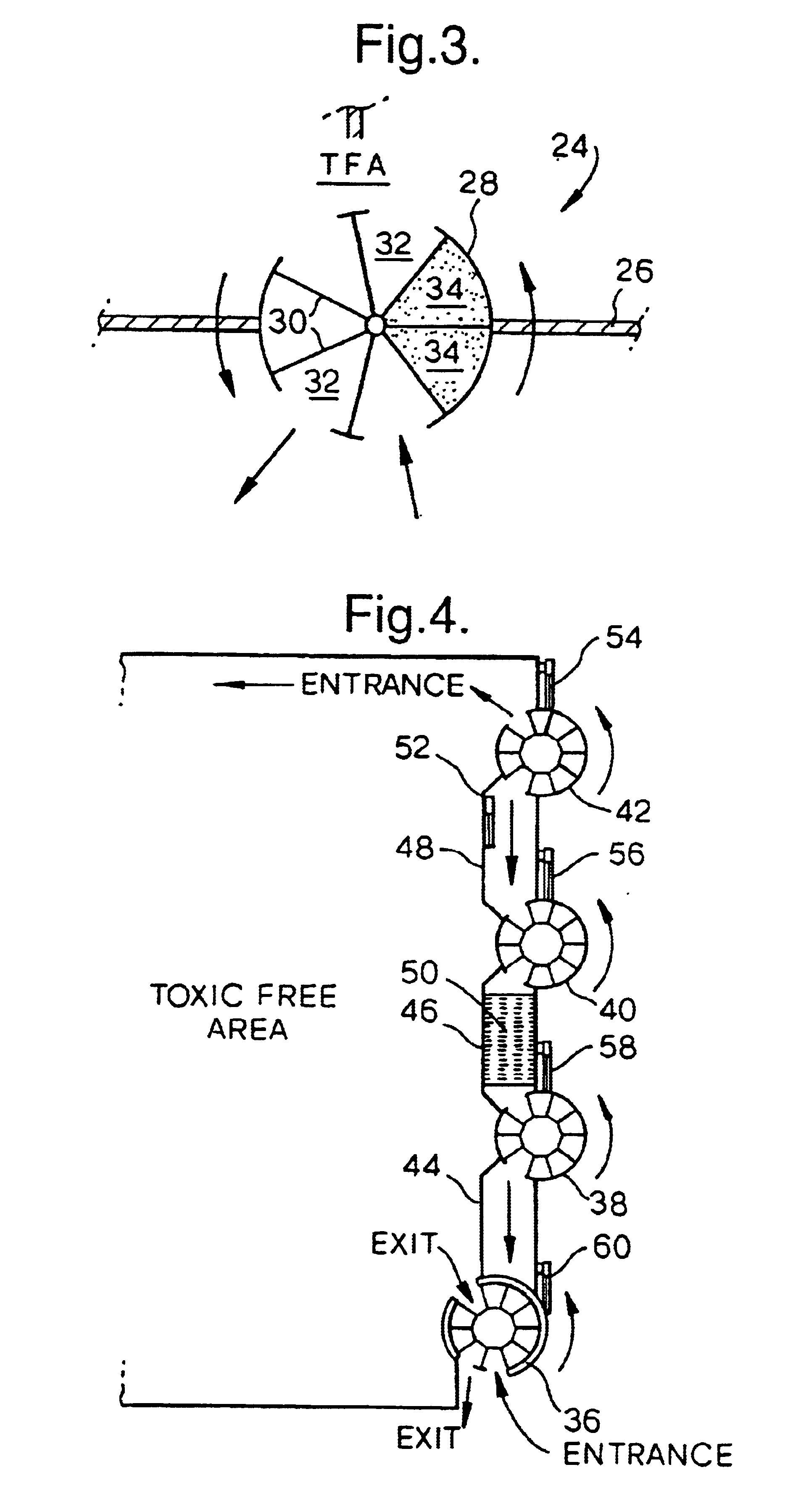Airlock system and method for protecting a toxic-free area
a technology of airlock system and toxic-free area, which is applied in the direction of space heating and ventilation details, heating types, domestic heating details, etc., can solve the problems of long-term protection and inapplicability of airlocks of the kind commonly used in shelters
- Summary
- Abstract
- Description
- Claims
- Application Information
AI Technical Summary
Benefits of technology
Problems solved by technology
Method used
Image
Examples
an embodiment
according to the present invention shown in FIG. 4, utilizes several rotating doors 36, 38, 40, 42 spaced-apart from each other and operationally interconnected by three airlock spaces 44, 46, 48. The airlock spaces are coupled with the doors by any per se known means, e.g., elastic sealing elements such as brushes, rubber or plastic strips or sponges. The airlock 46 is optionally furnished with a purging arrangement 50. While FIG. 4 illustrates a linear series configuration of rotating doors and intermittent airlock spaces located at the entrance to a TFA, it should be realized that any other configuration could just as well be used to suit the architecture of a building or TFA. In addition, as seen, this arrangement includes a main blower 52 disposed in the airlock space 48. There may be provided further blowers in any one of the other airlock spaces. Also, advantageously there may be provided in one or several airlock rotating door combination, an additional blower 54, 56, 58, 60...
PUM
 Login to View More
Login to View More Abstract
Description
Claims
Application Information
 Login to View More
Login to View More - R&D
- Intellectual Property
- Life Sciences
- Materials
- Tech Scout
- Unparalleled Data Quality
- Higher Quality Content
- 60% Fewer Hallucinations
Browse by: Latest US Patents, China's latest patents, Technical Efficacy Thesaurus, Application Domain, Technology Topic, Popular Technical Reports.
© 2025 PatSnap. All rights reserved.Legal|Privacy policy|Modern Slavery Act Transparency Statement|Sitemap|About US| Contact US: help@patsnap.com



